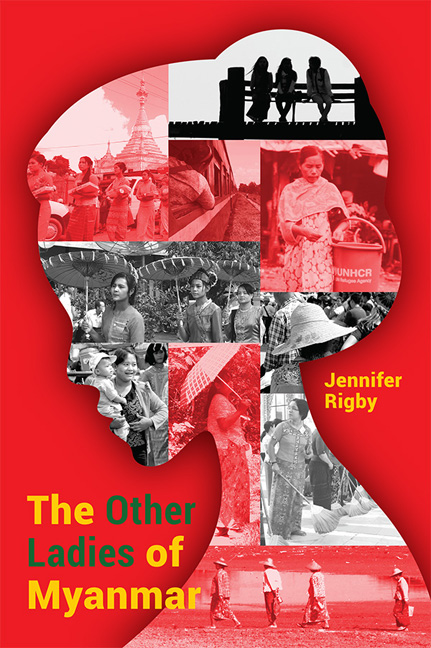Book contents
- Frontmatter
- Dedication
- Contents
- Preface
- Acknowledgements
- Introduction
- Timeline
- 1 The Activist: Cheery Zahau
- 2 The Feminist Buddhist Nun: Ketu Mala
- 3 The Survivor: Mi Mi
- 4 The Businesswoman: Yin Myo Su
- 5 The Environmental Campaigner and Princess: Devi Thant Cin
- 6 The Artist: Ma Ei
- 7 The Refugee Sexual Health Nurse: Mu Tha Paw
- 8 The Rohingya and Human Rights Champion: Wai Wai Nu
- 9 The Farmer: Mar Mar Swe
- 10 The Pop Star: Ah Moon
- 11 The Politician: Htin Htin Htay
- 12 The Archer: Aung Ngeain
- Conclusion
- About the Author
- Frontmatter
- Dedication
- Contents
- Preface
- Acknowledgements
- Introduction
- Timeline
- 1 The Activist: Cheery Zahau
- 2 The Feminist Buddhist Nun: Ketu Mala
- 3 The Survivor: Mi Mi
- 4 The Businesswoman: Yin Myo Su
- 5 The Environmental Campaigner and Princess: Devi Thant Cin
- 6 The Artist: Ma Ei
- 7 The Refugee Sexual Health Nurse: Mu Tha Paw
- 8 The Rohingya and Human Rights Champion: Wai Wai Nu
- 9 The Farmer: Mar Mar Swe
- 10 The Pop Star: Ah Moon
- 11 The Politician: Htin Htin Htay
- 12 The Archer: Aung Ngeain
- Conclusion
- About the Author
Summary
When I first started thinking about this book in 2015, it was a few months after the first openly contested elections in Myanmar in decades.
After years of oppression and brutality, the political party of democracy hero Aung San Suu Kyi had swept to power, and hope was everywhere.
In the run up to the vote, it had been the word on everyone's lips as I travelled across the country for my work as a journalist. On the night of the election, it rippled through the singing, dancing crowds on the streets of the country's biggest city, Yangon. And it dominated headlines for days afterwards, nationally and globally: the beginnings of hope, freedom and democracy for a people who had lived crushed under military rule for nearly fifty years.
Much of that hope centred on one remarkable woman: Aung San Suu Kyi herself.
She had been a lightning rod for Burmese hope since 1988, when her trip back to her homeland to care for her sick mother coincided with a national democratic uprising that Suu Kyi — the daughter of Burmese independence hero General Aung San — ended up leading.
The 1988 uprising was brutally suppressed, and the military regained control once more. But Suu Kyi did not give up, despite the fact that her efforts to bring freedom to her country saw her incarcerated in some form or another for the majority of the next twenty years.
Her sacrifices, her courage, and her commitment to peaceful protest in the face of oppression made her an icon both at home and abroad. In 1991, she was awarded the Nobel Peace Prize. In Myanmar, she became known as “The Lady”, an honorific nickname that gives an indication of her place in the popular imagination of her country.
So it is no surprise that hope was the order of the day on 8 November 2015, as voting slip after voting slip came in backing her party, the National League for Democracy. But now, as I sit down to write this preface two years on, the story is altogether more complicated.
- Type
- Chapter
- Information
- The Other Ladies of Myanmar , pp. ix - xiPublisher: ISEAS–Yusof Ishak InstitutePrint publication year: 2018

